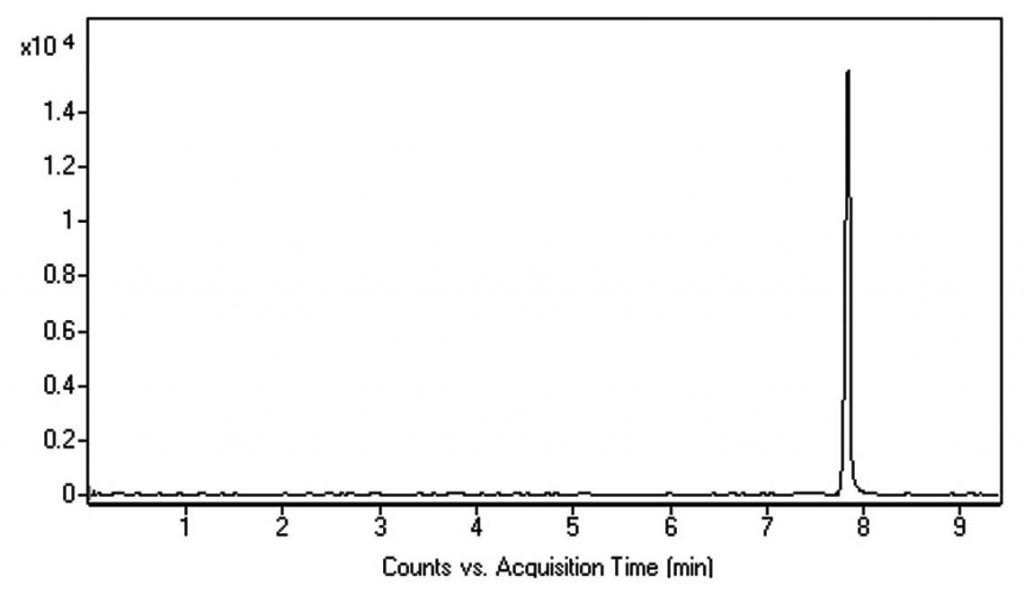THC Metabolite Found in Urine Matrix Analyzed
Click HERE for Column Ordering Information.
The extraction procedure using an SPE technique allows for successful detection of this Cannabis metabolite with this Method. It is worth noting that the Retention of this Compound was achieved using Methanol rather than Acetonitrile as the Organic component in the Mobile Phase.


Peak:
(l)-9-Carboxy-11-Nor-Delta-9-Tetrahydrocannabinol, m/z 345.2060 [M+H]+
Method Conditions:
Column: Cogent Phenyl Hydride™, 4µm, 100Å
Catalog No.: 69020-05P-2
Dimensions: 2.1 x 50mm
Mobile Phase:
—A: DI H20 / 0 .1% Formic Acid (v/v)
—B: Methanol / 0.1% Formic Acid (v/v)
Gradient:
| Time (minutes) | %B |
| 0 | 10 |
| 3 | 10 |
| 7 | 80 |
| 8 | 10 |
Post time: 3 minutes
Injection vol.: 1µL
Flow rate: 0.4ml / minute
Detection: ESI – POS – Agilent 6210 MSD TOF Mass Spectrometer
Sample Preparation: Urine sample was loaded into an SPE cartridge II (Clean Screen Xcel™, UCT Bristol, PA, USA) and eluted with 1mL of Acetonitrile, 2-Propanol, Formic Acid (50:50:1). After elution, the Sample was dried under Nitrogen gas and dissolved in 100uL of 50:50 Methanol / DI Water / 0.1% Formic Acid. The solution was filtered through a 0 .45µm AQ™ Nylon Syringe Filter (MicroSolv Tech Corp).
t0: 0.9 minutes
Note: (l)-9-Carboxy-11-Nor-Delta-9- Tetrahydrocannabinol is the main metabolite of Tetrahydrocannabinol (THC), formed in the body after consumption of Cannabis. The compound stays in the body for a significant time, making it useful as a test compound for Cannabis use. In the U.S., Cannabis is a controlled substance at the Federal level, although many states have enacted laws legalizing it.
Attachment
No 268 Cannabis Metabolite Analyzed with LCMS pdf 0.2 Mb Download File


